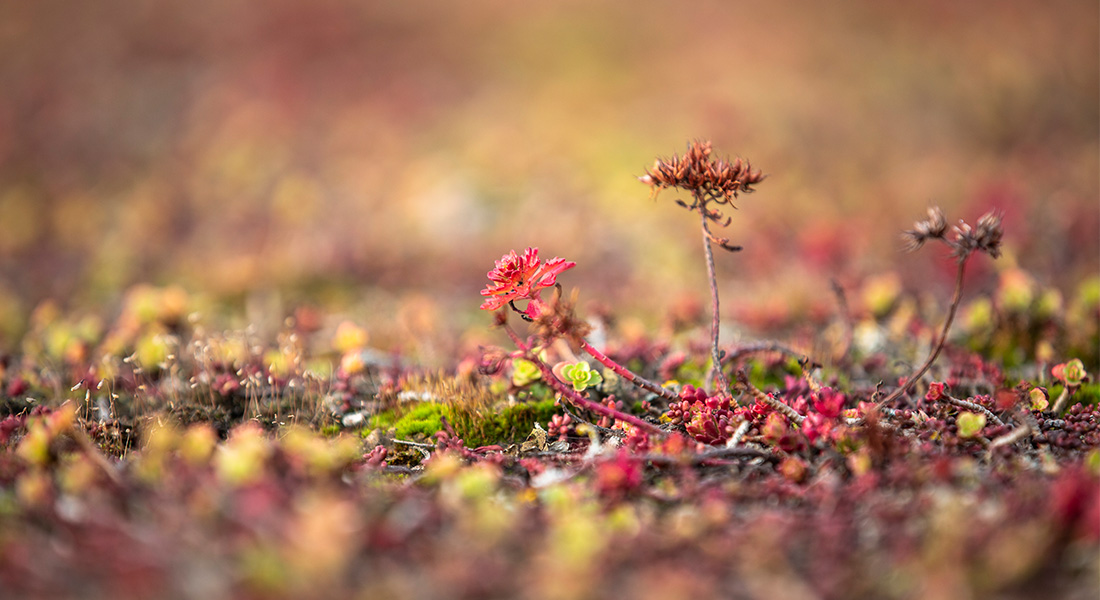SCIENCE’s green rooftops contribute to climate-proofing
Several buildings at SCIENCE are landscaped with green rooftops, whose main purpose is to help climate-proof Frederiksberg Municipality. But these roofs offer other benefits as well. Come along on a visit up to roof of the Plant Science Centre.

Slightly winded, we reach the top of the Plant Science Centre's many stairs and meet the door that leads out onto the building's rooftop. Beyond the door, we expect to find a hard roof. Instead, our feet sink into soft soil.
SCIENCE Communication has ventured onto one of several 'green roofs' hiding atop University of Copenhagen buildings. Every square meter of rooftop is covered with soft soil and plants to relieve pressure on sewers and prevent flooding from stormwater runoff.
"Due to their construction, these roofs retain water and delay drainage into sewers. In the event of cloudburst, even half an hour can make a huge difference," explains Lars Kristensen, project manager at Campus Service and our rooftop tour guide.

"The more tiles laid, the more water is led into the sewer system. If we didn't have these green roofs, our basement would be flooded more often. That's why they're incredibly valuable," he adds.
Carefully selected plants
According to an estimate from Frederiksberg Municipality, roofs such as the ones built at SCIENCE retain approximately 40 percent of rainfall. They typically have a layer of growth between 45 and 50 millimeters and incorporate vegetation selected carefully for the purpose.
"A wide variety of stonecrops (sedums) are used. These are very suitable for green roofs, as they are extremely hardy and can easily withstand being bone dry for long periods of time, as well as baking under the hot sun", explains Botanical Gardens Operations Manager Tonni Eilersen.

While the main purpose of these green roofs is to support climate-proofing by holding back rainwater, blanketing rooftops with stonecrops has other benefits.
Biodiversity is restored and maintained in dense urban areas, where green spaces are far between, leading to improvements in the living conditions of various insects and bird species. Furthermore, the roofs bind CO2 and improve urban air quality, just as their absorption of sunlight can help lower temperatures during our ever-warmer Danish summers.
Before heading down the many stairs, we enjoy the view of Copenhagen's skyline one last time.

By
